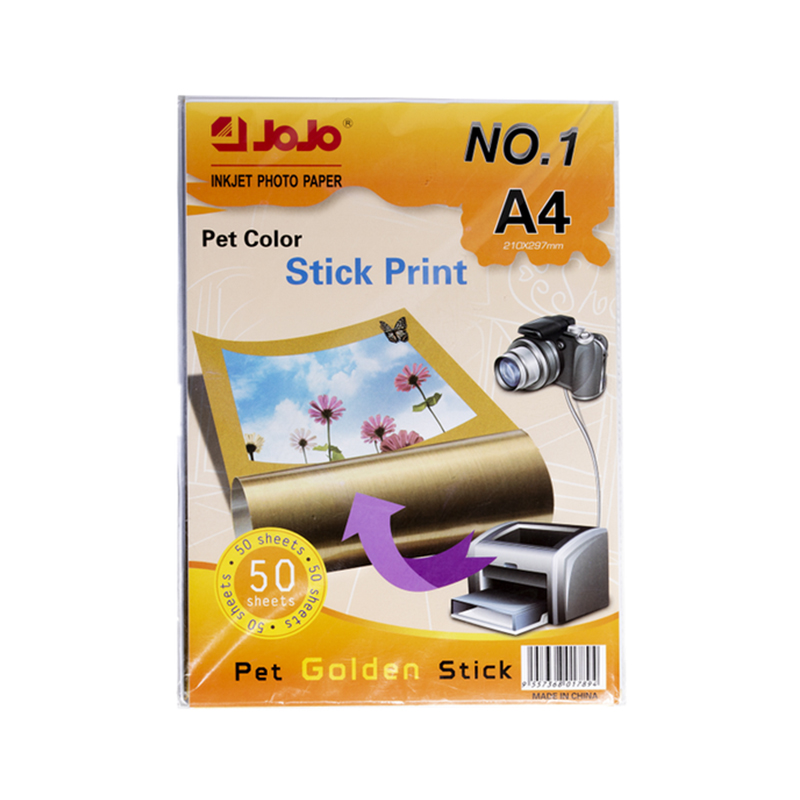If you need any help, please feel free to contact us
How Base Paper Type Influences Final Print Quality
Understanding how the base paper type affects attributes such as color vibrancy, durability, and ink absorption can help users make informed decisions when selecting printing materials, including waterproof printer paper for inkjet printers and products like JoJo transfer paper.

Understanding Base Paper and Its Role
Base paper is the fundamental substrate onto which coatings and inks are applied. Its physical and chemical properties form the foundation for print quality. For applications like heat transfer printing, the base paper needs to handle not only the ink but also withstand heat and pressure during the transfer process. Similarly, for inkjet printing, the paper must be compatible with the ink to achieve accurate color reproduction and sharp details.
Types of Base Paper Commonly Used
Various base paper types exist, including cellulose-based papers, resin-coated (RC) papers, and synthetic papers. Each has distinct characteristics affecting print outcomes:
Cellulose-Based Paper: This is the traditional paper made from wood pulp fibers. It generally offers good printability but may absorb ink too deeply if uncoated, pilot to duller colors.
Resin-Coated Paper: Often used in photographic printing, RC papers have a polyethylene coating on both sides, providing a smooth surface that limits ink absorption and enhances color brightness.
Synthetic Paper: Made from plastic resins, synthetic papers offer high durability and water resistance, making them suitable for specialized applications.
For products like JoJo transfer paper, which are designed for heat transfer applications, the base paper is typically engineered to ensure it can endure the heat pressing process without distortion or damage.
The Impact on A4 Heat Transfer Paper
A4 heat transfer paper, widely used for personal and small-batch textile printing, relies heavily on the base paper quality. When heat and pressure are applied during transfer, the base paper must release the ink cleanly onto the fabric. If the base paper absorbs too much ink or lacks heat resistance, the transfer might be uneven or lose color fidelity.
Choosing an appropriate base paper ensures that the ink remains on the surface until it is pressed onto the fabric. Papers designed specifically for heat transfer typically include coatings that control ink release and improve transfer sharpness.
Waterproof Printer Paper for Inkjet Printing
Waterproof printer paper for inkjet applications presents unique challenges and benefits. Inkjet inks are water-based, which can cause problems with traditional papers that absorb ink too readily, resulting in smudging or bleeding. Waterproof papers incorporate coatings or synthetic materials to prevent ink from soaking into the fibers, thereby maintaining image clarity and durability even when exposed to moisture.
The base paper used in waterproof printer paper must have reliable dimensional stability and coating adhesion to handle the ink without warping or peeling. This is particularly important in environments where prints may be exposed to humidity or occasional water contact.
Compatibility Between Base Paper and Ink
For high-quality prints, compatibility between the base paper and the ink type is crucial. Pigment-based inks, common in waterproof printer papers, tend to sit on the surface of the paper and require coatings that can absorb and hold the pigment effectively. Dye-based inks, on the other hand, soak into the fibers more deeply, necessitating different paper characteristics.
Jojo transfer paper is formulated to work well with specific types of inks and printing devices, ensuring that the final print quality meets the demands of textile decoration. Its base paper structure allows for reliable ink retention and smooth release during the heat transfer process.
The base paper type fundamentally influences the final print quality across various digital printing applications. Whether printing on A4 heat transfer paper for textile designs, using jojo transfer paper for specialized transfers, or producing images on waterproof printer paper for inkjet printers, selecting the right base paper is key to achieving desired results. Attention to the paper’s absorption, coating, heat resistance, and compatibility with inks ensures that prints exhibit accurate colors, durability, and clarity.
Choosing a suitable base paper tailored to specific printing needs helps enhance productivity and customer satisfaction in the diverse field of digital print media.

 English
English Español
Español 中文简体
中文简体 Português
Português

